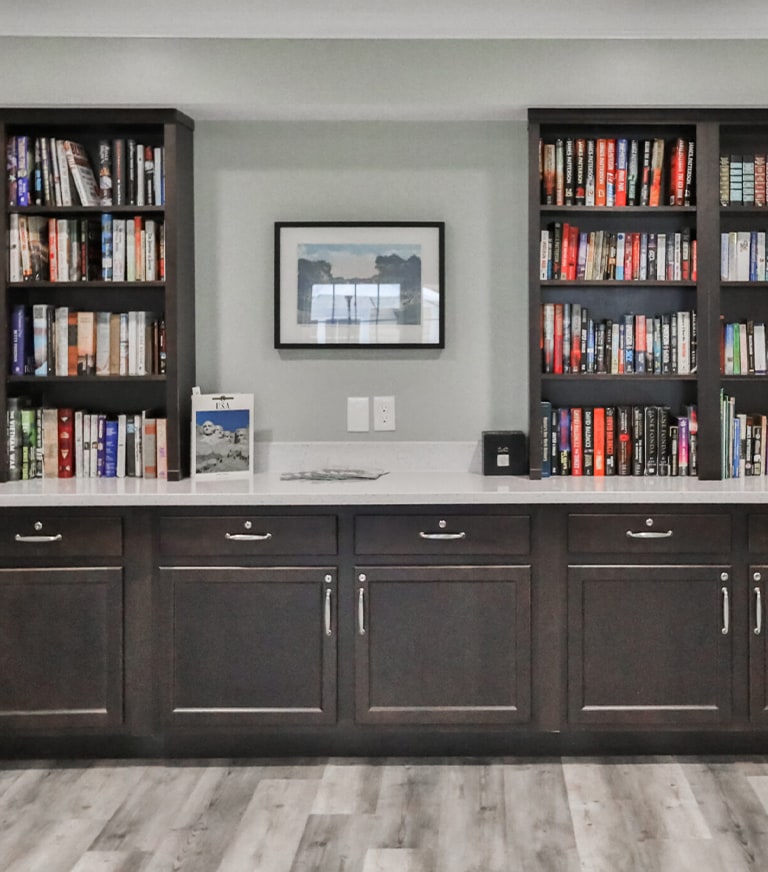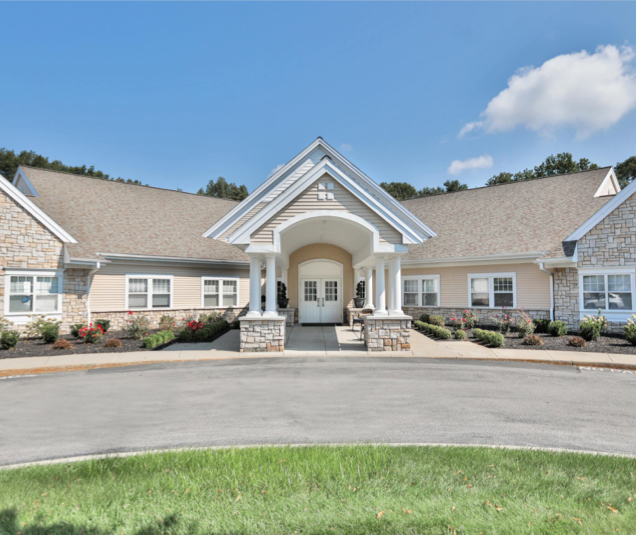Memory care communities are often secured to ensure the safety and well-being of their residents. While this may seem restrictive, the goal is to provide a safe environment for seniors with memory impairments, such as Alzheimer’s or dementia, who may wander or get confused.
Yes, memory care communities are typically locked. This is done in order to reduce the risk of injury or disorientation. The locked areas are carefully monitored and designed to make residents feel secure while maintaining their dignity and independence.
How Memory Care Prioritizes Safety
Memory care communities are designed to meet the unique needs of seniors with memory loss. These communities are structured to create a controlled environment where residents feel comfortable and secure while receiving the care they need.
Safety measures, like locked doors and safe outdoor spaces, are put in place to minimize the risks associated with wandering or unsafe behavior. These measures ensure that residents are not able to leave the premises unsupervised.
In addition to physical safety features, memory care communities provide specialized care tailored to each resident’s cognitive abilities. Staff members are trained to recognize signs of distress, confusion, or agitation, and they respond with care and compassion. The goal is to help residents feel calm and supported while also ensuring their safety in a nurturing environment.
While some may worry about the locked nature of memory care communities, these safeguards offer peace of mind for families. The design of these communities allows residents to explore and interact within the safety of a secure environment. Residents enjoy a sense of freedom, moving around communal spaces, engaging in activities, and spending time with others, all while being closely monitored by staff.
Tactics for Keeping Residents Safe
Memory care communities use various security measures to ensure residents’ safety while still maintaining a sense of comfort and freedom. These environments are designed with the unique needs of individuals with dementia or Alzheimer’s in mind.
For example, secure exits and locked doors are often in place to prevent wandering, which is common in those living with cognitive impairments. Staff members are trained to monitor residents around the clock, providing supervision and support while respecting individuals’ independence. Many communities also utilize alarm systems that notify staff if a resident tries to exit or enter a restricted area, allowing them to respond quickly to ensure everyone’s safety.
In addition to physical security measures, memory care communities often have features such as restricted access to certain areas to protect residents from potential hazards or to limit confusion. Common areas, dining rooms, and activity spaces are typically open and welcoming, allowing residents to interact and engage in meaningful activities, while more private or potentially dangerous spaces, like kitchens or storage areas, may be off-limits.
The goal is to create an environment where residents are safe and supported, while also preventing accidents or wandering.
Signs It’s Time to Consider Memory Care
Transitioning to memory care is a big decision, and recognizing when it’s time to make the move can be challenging. Some common signs that may indicate it’s time for your older loved one to consider memory care include:
- Increased confusion or forgetfulness: Memory care can provide the specialized support that your loved one needs if they’re becoming disoriented in familiar places or forgetting important details about their life.
- Wandering behavior: If your loved one has started wandering, especially in unsafe environments, memory care communities can offer a secure setting to prevent injury.
- Difficulty with daily activities: If your loved one struggles with everyday tasks, such as bathing, dressing, or eating, memory care assists with these activities.
- Aggressive or unusual behavior: Memory care professionals can offer appropriate care and calming interventions when memory loss leads to agitation, aggression, or significant personality changes.
- Need for constant supervision: If your loved one requires round-the-clock supervision for their safety, a memory care community provides a secure environment with trained staff.
Do Memory Care Residents Leave the Community?
While memory care communities are secured, residents are able to leave in some instances.
Many communities offer organized outings and activities outside the secure environment, allowing residents to enjoy field trips, visits to local parks, or social events. Team members carefully supervise these outings to ensure safety, providing a sense of normalcy and enrichment for the residents.

Additionally, family members are encouraged to visit their loved ones in memory care communities. These visits offer a connection to the outside world while maintaining a secure and supportive environment. Staff works closely with families to ensure that these visits are meaningful and occur in a comfortable, safe space.
For residents who may need to leave temporarily, such as for medical appointments or family gatherings, memory care communities can make arrangements to ensure that they are safely transported. However, these outings are always carefully planned and supervised to ensure that the residents’ safety is the top priority.
Empathetic Memory Care at Peregrine Senior Living
At Peregrine Senior Living Clifton Park, we understand that finding the right memory care community for your loved one can be a difficult decision. Our staff is trained to offer compassionate, empathetic care that supports each resident’s unique needs. We create secure and nurturing environments where residents can continue to thrive with dignity, respect, and the highest quality of care.
Contact us today to learn more about how we can support your loved one on their journey.











Today for our around the world experience we traveled to Paris! We took a virtual tour of Paris, and had a Paris style fashion show! ... See MoreSee Less
0 CommentsComment on Facebook
Happy Veterans Day ❤️🤍💙 ... See MoreSee Less
2 CommentsComment on Facebook
Today for Veterans Day we had a special ceremony with our wonderful volunteer Tom who played taps for our residents❤️💙 Happy Veterans Day, and thank you to all who served! ... See MoreSee Less
1 CommentsComment on Facebook
Today’s the day…we hope to see you from 10am-2pm! ... See MoreSee Less
Learn More
Senior Living Community at Clifton Park, NY | Peregrine
peregrinecliftonpark.com
Compassionate memory & respite care in Clifton Park, NY. The Peregrine Way® uses a personalized approach to dementia support and family-centered living.0 CommentsComment on Facebook
A huge thank you to our friends from Starpoint church who came to our facility and hosted an ice cream social and a talent show🎤🌟 ... See MoreSee Less
1 CommentsComment on Facebook
Caregiving is an act of love that requires time, energy, passion, and strength. Today, show a caregiver how much you appreciate them and thank them for all they do.
Together, we can create a circle of compassion and care—for caregivers and those they care for.
peregrinecliftonpark.com/ ... See MoreSee Less
0 CommentsComment on Facebook
Our Halloween costume party was a hit! 🎃👻 ... See MoreSee Less
3 CommentsComment on Facebook